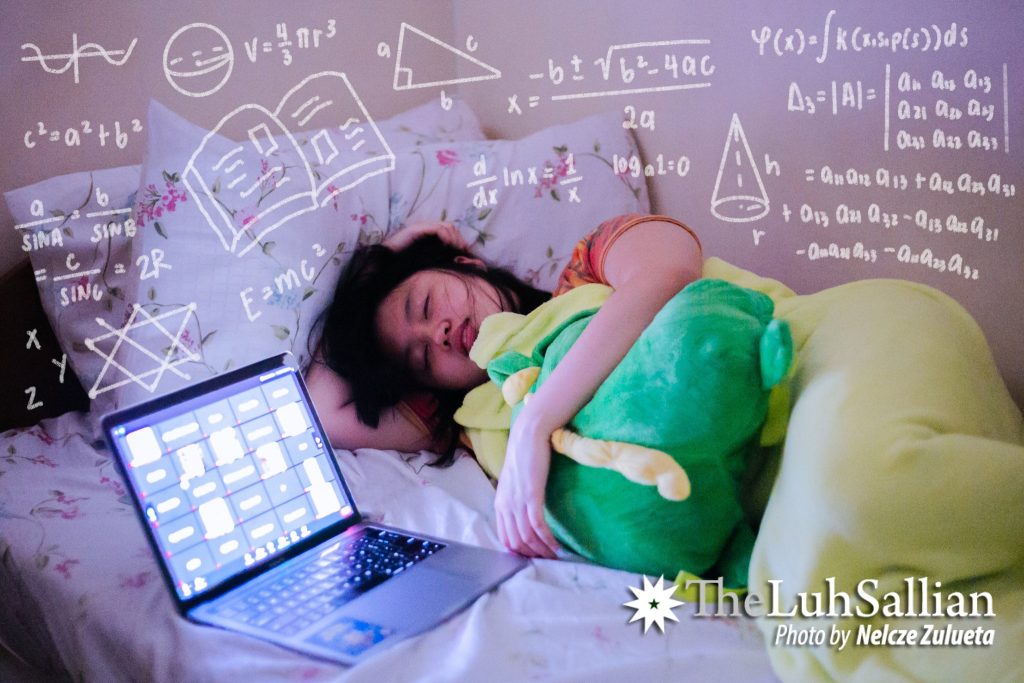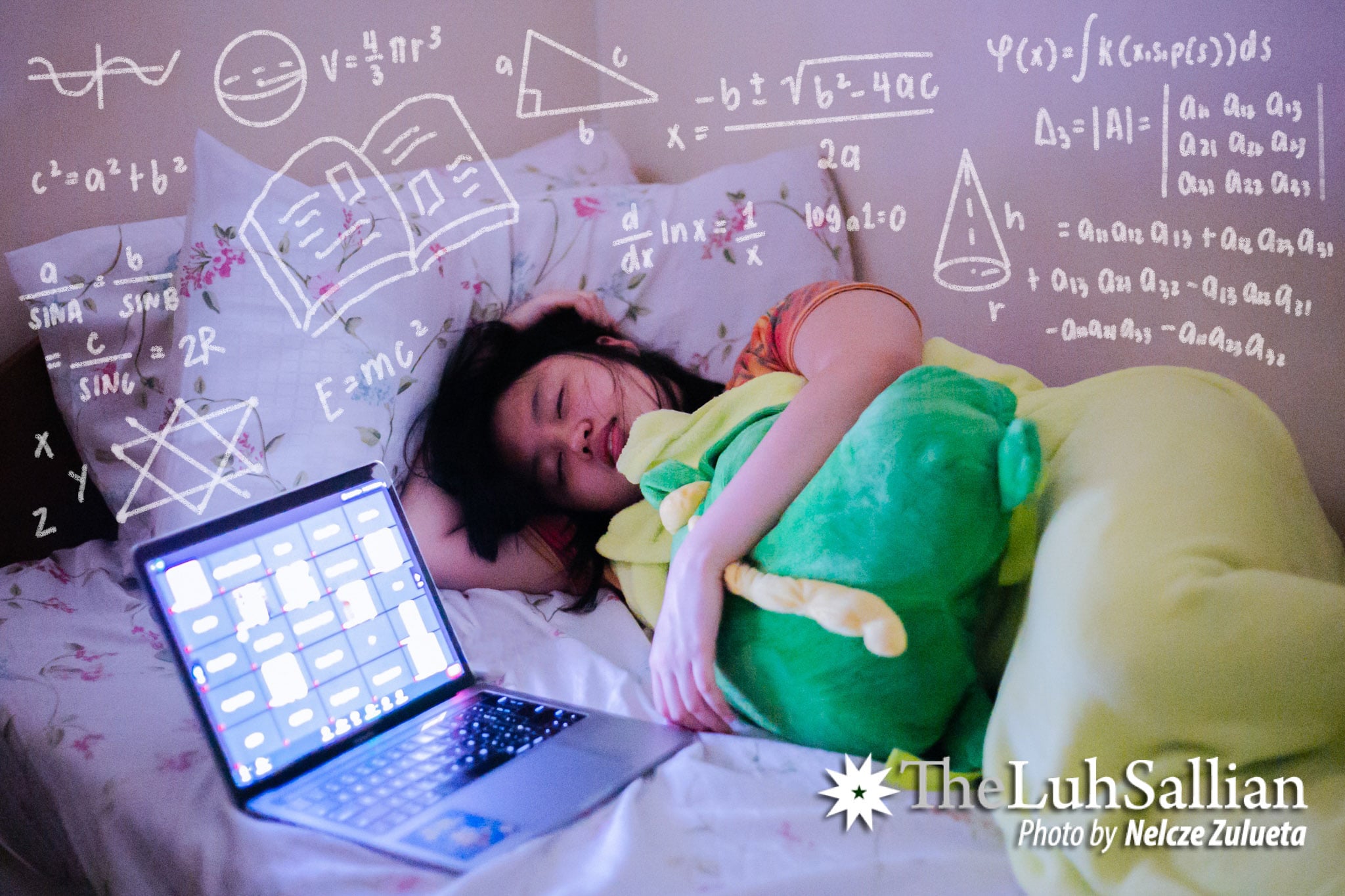The implementation of online learning has posed newfound challenges for students and teachers alike. Now that students are learning from their screens, monitoring their engagement is difficult, especially for instructors who incessantly deal with students sleeping during class hours. While professors abhor the idea of students dozing off during lectures, a recent study shows that taking a well-earned nap during classes is less problematic than it seems.

A well-earned test
After learning that one of his students—infamous for constantly sleeping during his classes—scored above the mean average on all his exams, Dr. Matthew Lohgna, the head somnology researcher at the University of Neurology and Accurate Napping (UNAN) in Imus, Cavite, hypothesized that the brain can absorb and process information much faster during the Rapid Eye Movement (REM) stage of sleep.
To test his hypothesis, Lohgna and his team gathered several UNAN students to participate in an experiment where half of the participants were to be asleep while attending classes on calculus, biology, literature, and Philippine history. The other half would be monitored to ensure that they were awake and participative in the classes.
To circumvent ethical guidelines put in place by UNAN, Lohgna arranged a pre-experiment celebration for the participants at a bar. Unknown to them, Lohgna spiked half of the drinks with a sleeping agent of his own creation. “My team and I engineered a little parting gift for half of our lovely volunteers,” he remarks. “This concoction of soju and melatonin—which we dubbed ‘sojunin’—should force anyone into REM sleep.”
Sure enough, the sleeping agent worked; half of the volunteers were knocked out and were subsequently dragged to the testing site where their first class was to be held. Once the final lecture was over, a member of Lohgna’s team dropped a Hydro Flask to wake up the sleeping students. They were then handed a standardized test and were given four hours and 20 minutes to complete the exam.
After collecting the exams, Lohgna and his team began analyzing the data. Upon analysis, they observed that the sleeping participants scored 30 percent higher compared to the ones who were awake. With the experiment producing promising results, Lohgna continued his research hoping his hypothesis would not be put to rest.
Sweet dreams
Through further research, Lohgna discovered that a hormone dubbed “tolognanine” regulates our circadian rhythm and allows us to absorb more information while sleeping. Tolognanine is known to stimulate one’s productivity—leading to better academic performance.
Due to his passion for sleeping, Lohgna endorsed his findings to DLSU, who has established a class for students to learn the proper sleeping form: the Justified Attention Through Sleeping Patterns Enrichment Routine (GEJASPR) course. In GEJASPR, various techniques that increase tolognanine production in the hypothalamus will be demonstrated.
On top of that, the researcher sent in pre-recorded class lectures where he advised students to sleep during classes to retain the information from their professors’ discussions. “Sleeping during classes helped me become summa cum laude during my college days,” Lohgna illustrates.
In the same lecture series, he also encourages everyone to attend synchronous sessions and watch lecture recordings from their beds for better sleep quality and higher information intake. “During the pandemic, I taught lectures from my king-sized bed to ensure that I perform at my very best,” he says.
As for determining the success of the practice, Lohgna furthers that snoring indicates effective information absorption and increased tolognanine production. “It’s better if you snore during synchronous sessions as long as your microphone is off,” he recommends. He also says that the key to higher information intake is sleep duration. “I once slept for 69 hours and I got a 200 out of 150 in my math exam,” Lohgna recalls.
Topnotchers
One of Lohgna’s students, Hopio Slipwell from UNAN, articulates how the application of Lohgna’s teachings helped her achieve a grade point average of 4.5. “Sis, dein bumababa ng 4.0 ‘yung grades ko because I kept sleeping during class,” he points out.
(Sis, my grades didn’t go lower than 4.0 because I kept sleeping during class.)
Slipwell elaborates that placing a pillow beneath his feet helps his sleep better and absorb more information. This has led to higher exam scores—especially in math and science. “OMG sis, alam mo ba na feeling the smoothness of the pillow on your soles really stimulates your circadian rhythm?” he raises.
(OMG sis, did you know…)
By following the proper sleeping form, students can continue to excel without having to leave the comfort of their own beds. Especially as Lasallian achievers for God and country, this comes in handy for one’s next 7:30 am class on Monday.



